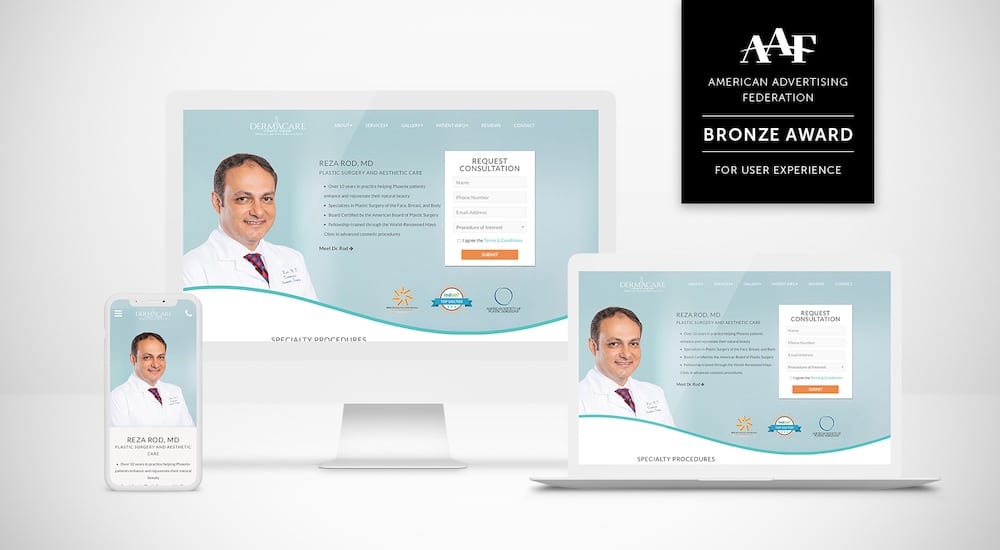Pay-Per-Click (PPC) is a great tool for acquiring new patients, but can be extremely costly and time-intensive if you’re not utilizing it properly. All to often, we see that practice owners are afraid to invest in PPC because their previous campaigns did not produce results and were extremely costly. If you (or your current marketing partner) set up a campaign without optimizing it, then it will be extremely costly and will not produce the results you want.
In this article, we cover 3 reasons you may be afraid to invest in PPC and why you shouldn’t be afraid.

Reason #1: “PPC is Too Expensive”
This is usually the number one reason practice owners do not want to invest in PPC. They’ve either been burned by previous companies or campaigns in the past, or they look at the suggested Cost-Per-Clicks (CPC) provided by Google & Bing and think they can’t afford it. It is a valid fear, but you should not let the fear of a high spend effect your decision. Let’s take a little bit deeper dive into spending.
Let’s say your CPC for a main keyword is $15. Now let’s say you set a monthly budget of $1,000. That amounts to approximately 66 clicks. Using a standard 2-3% conversion rate, you would get 13-19 leads contacting you a month. Now let’s say you convert 3 people into getting surgery (let’s use breast implants for this example). The average cost of getting breast implants, according to RealSelf, is $6,325 (http://www.realself.com/Breast-implants/reviews). That equates to $12,650 in revenue to your practice. Subtract the amount spent on PPC for the month, and you’re left with $11,650 in revenue for your practice. That is an 8.5% return on investment (ROI).
We don’t know about you, but having a return on that investment of 8.5% would make us extremely happy. In fact, we would want to allocate even more budget per month to PPC if we are seeing an 8.5% return on investment. The key here is that you’re looking at all of the data, and not just the cost. If you’re seeing a bill from Google for $500 a couple times a month, and aren’t tracking if those leads converted into surgery, then of course you’re going to be afraid of investing in PPC.
This leads us to our next reason: tracking.
Reason #2: “I Don’t Know If These PPC Leads Are Actually Converting To Surgery”
We’ll be perfectly blunt: if you’re not tracking your leads, then you are failing at marketing. How can you know where to allocate more budget to if you don’t know what’s working for you? How can you know to stop investing in a campaign if you’re not tracking lead conversions? It is surprisingly common to hear clients say they don’t have a method for tracking their leads (which amazes us).
There are plenty of tools and tricks available to you to see if your leads are converting and what the ROI on that conversion is. One such tool, is called MyMedLeads (www.mymedleads.com). This wonderful tool allows you to see where your leads are coming from and also the ROI off of the conversion. It also helps practice owners identify areas within their practice where they might be losing leads in their sales funnel. Knowing this kind of data will only enhance your practice by allowing you to make adjustments in your processes to get more leads converting to surgery.
The easiest way to track if your leads are converting, is to simply ask where the lead came from in your initial contact with the lead. Most of the time, leads will say they found you online or on Google. Now, obviously that isn’t enough information to know if they came from a PPC ad or your Organic Search listing. Asking clarifying questions is essential to knowing where exactly the lead came from.
Once you ask and know they came from PPC, simply put a note next the patient in your PMS that says “PPC” or something so you know they came from a PPC ad. Then, at the end of the month, check to see if these patients converted into surgery, calculate how much that surgery made in revenue, and then you can figure out the ROI on your PPC campaign for the month. If the lead did not convert to surgery, well now you can reverse engineer and see where you lost the lead and make adjustments to that area of your sales process to increase conversion.
Now, those are ways to track online submissions, but what about calls from an ad? There a number of different ways to track calls coming from ads. MyMedLeads has call tracking numbers you can use, and there are a number of services out there to get you set up with tracking numbers. Google will even let you create a Google Forwarding Number within the ad itself, so that you can count call conversions within the AdWords interface.
Setting up tracking is essential for any marketing campaign, but especially essential for a PPC. It can be time-intensive to set everything up, but once you do, you’ll be glad you did.
This leads us to the next reason: time.
Reason #3: “I Don’t Have The Time To Invest In PPC”
This is a completely valid reason. PPC ads and testing can take a lot of time to get right, and if you’re doing PPC for the first time, then we recommend you spend as much time possible learning about all of the features that are offered. Once you know all of the features though, setting up and optimizing PPC campaigns can take little to no time at all, especially if you know your market extremely well.
The initial setup will take some time, as there are a lot of features to implement. Making sure you have ads written, ad extensions added, conversion tracking setup, strategic keyword research completed, and optimizing bids on the most quality keywords will take some time (and you should dedicate as much time as you can to the initial setup). But once you have everything setup, testing is fast and easy!
Does an ad have a poor Click-Thru-Rate (CTR)? Change the headline of the ad. Still a poor CTR? Change the description lines. Spending too much on a keyword that isn’t converting? Simply pause or delete the keyword. These things take mere minutes (if not seconds) to complete. You can pause ad extensions, add new ones you think will be beneficial, take a look at the search terms people used for your ad to show up and add those terms with a click of a button. Ad showing up for keywords you don’t want it to? Add those keywords to your negative keyword list in seconds. There are hundreds of simple testing and optimizing techniques you can use that take a minimal amount of time and will ensure you’re getting the maximum ROI out of your PPC campaign.
Conclusion: Don’t Be Afraid Of PPC
Here’s a simple statistic to show the value of PPC: According to WordStream, Google made 97% of its revenue from advertising in Q3 of 2010 to Q2 of 2011 (http://www.wordstream.com/articles/most-expensive-keywords). That’s 33.3 billion dollars! How would Google be able to make this much money from PPC if it wasn’t effective and didn’t work? They wouldn’t be able to! Advertisers would not pay to have their ads on Google unless it worked.
So if you take nothing else away from this blog post, take this: With a strategic PPC campaign, you can increase your patient base, increase your ROI and do it with minimal effort. It’s a great advertising tool, and something you should not be afraid to invest heavily into.








